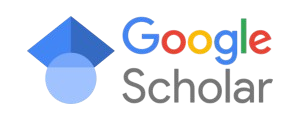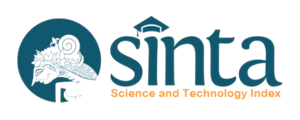TOWARD CREATIVITY AND SPEAKING ABILITY OF EFL STUDENTS: A MIXED-METHOD STUDY
(1) Universitas Sebelas Maret
(2) Universitas Sebelas Maret
(3) Universitas Sebelas Maret
(*) Corresponding Author
Abstract
The present study employed a mixed-method approach to investigate creativity and speaking ability of EFL learners towards its relationship and other essential factors. Indonesian EFL students of the 5th semester taken the course of Academic Speaking in a private university (n=30) who were selected randomly responded Creative Personality Scale (CPS) and Self-Rating of Creativity. For the former, they described themselves by checking off 18 positively scored and 12 negatively scored items which were given a value of +1 and a value of -1, respectively. The latter was assessed by using eight items from the creativity scale. The 7-point Likert-type scales (1=strongly disagree, 7=strongly agree) were made to respond these items. Following this, the students' monologues based on five themes were scored using the IELTS Speaking Test Descriptor. The data were analyzed using Spearman rank-order correlation coefficient, pattern matching, and explanation building. The finding shows a significant correlation between EFL learners' creativity and their speaking ability (? = .961). The students also faced up to the cultural constraints in advancing their creativity. This study should, therefore, be of value to practitioners wishing to provide EFL students with appropriate materials that are addressed to enhance their speaking ability.
Keywords
Full Text:
PDFReferences
Andy, H. (2018). 21 st century skills and the 4Cs in the English language classroom by Andy Halvorsen. American English Institute, 04.
Becker, C., & Roos, J. (2016). An approach to creative speaking activities in the young learners classroom. Education Inquiry, 7(1). https://doi.org/10.3402/edui.v7.27613
Bernstein, B. (1971). Class, codes and control: Theoretical studies towards a sociology of language. Routledge & Kegan Paul, London.
Bruner, J. S. (1977). The process of education. Cambridge: Harvard University Press.
Burns, A., & Richards, J. C. (2012). The Cambridge Guide to pedagogy and practice in second language teaching. New York: Cambridge University Press.
Chen, M. R. A., & Hwang, G. J. (2019). Effects of a concept mapping-based flipped learning approach on EFL students English speaking performance, critical thinking awareness and speaking anxiety. British Journal of Educational Technology, 0(0), 118. https://doi.org/10.1111/bjet.12887
Cheung, R. H. P., & Mok, M. M. C. (2018). Early Childhood teachers perception of creative personality as a predictor of their support of pedagogy important for fostering creativity: A Chinese perspective. Creativity Research Journal, 30(3), 276286. https://doi.org/10.1080/10400419.2018.1488345
Colucci, L., Burnard, P., Cooke, C., Davies, R., Gray, D., & Trowsdale, J. (2017). Reviewing the potential and challenges of developing STEAM education through creative pedagogies for 21st learning: how can school curricula be broadened towards a more responsive, dynamic, and inclusive form of education? BERA Research Commission, (August), 1105. https://doi.org/10.13140/RG.2.2.22452.76161
Cresswell, J. W. (2013). John W. Creswell-research design_ qualitative, quantitative, and mixed method approaches.pdf (p. 273). p. 273. California: SAGE Publications, Inc.
Davis, M. A. (2009). Understanding the relationship between mood and creativity: A meta-analysis. Organizational Behavior and Human Decision Processes, 108(1), 2538. https://doi.org/10.1016/j.obhdp.2008.04.001
Drago, V., & Heilman, K. M. (2015). Creativity. Encyclopedia of Human Behavior: Second Edition, (1926), 606617. https://doi.org/10.1016/B978-0-12-375000-6.00112-9
Egan, A., Maguire, R., Christophers, L., & Rooney, B. (2017). Developing creativity in higher education for 21st century learners: A protocol for a scoping review. International Journal of Educational Research, 82, 2127. https://doi.org/10.1016/j.ijer.2016.12.004
Geisinger, K. F. (2016). 21st century skills: What are they and how do we assess them? Applied Measurement in Education, 29(4), 245249. https://doi.org/10.1080/08957347.2016.1209207
Gough, H. G. (1979). A Creative personality scale for the adjective check list. Journal of Personality and Social Psychology, 37(8), 13981405.
Kaufman, J. C. (2015). Creativity is more than silly, more than art, more than good: The diverse career of Arthur Cropley. Creativity Research Journal, 27(3). https://doi.org/10.1080/10400419.2015.1063879
Krashen, S. (1982). Principles and Practice in Second Language Acquisition. https://doi.org/10.3102/00346543033001038
Loh, C. Y. R., & Teo, T. C. (2017). Understanding Asian students learning styles, cultural influence and learning strategies. Journal of Education & Social Policy, 7(1), 194210. Retrieved from http://jespnet.com/journals/Vol_4_No_1_March_2017/23.pdf
Malaikosa, C., & Sahayu, W. (2019). Teachers challenges on implementing EFL curriculum in Indonesian rural area. Journal of Foreign Language Education and Technology, 2(1), 3954.
Montazeri, M., & Salimi, E. A. (2019). Assessing motivation to speak (MTS) and willingness to communicate through metalinguistic corrective feedback. Learning and Motivation, 68(March), 101594. https://doi.org/10.1016/j.lmot.2019.101594
Perry, A., & Karpova, E. (2017). Efficacy of teaching creative thinking skills: A comparison of multiple creativity assessments. Thinking Skills and Creativity, 24, 118126. https://doi.org/10.1016/j.tsc.2017.02.017
Poedjiastutie, D. (2009). Culture Shock experienced by foreign students studying at Indonesian university. Jurnal Humanity, 4(2), 11407. https://doi.org/10.15639/teflinjournal.v20i1/25-36
Runco, M. A. (2007). Achievement sometimes requires creativity. High Ability Studies, 18(1), 7577. https://doi.org/10.1080/13598130701350791
Runco, M. A. (2015). Meta-creativity: Being creative about creativity. Creativity Research Journal, 27(3). https://doi.org/10.1080/10400419.2015.1065134
Runco, M., & Chand, I. (1995). Cognition and creativity. Educational Psychology Review, 7(3), 243267. https://doi.org/10.1007/BF02213373
Schoonenboom, J., & Johnson, R. B. (2017). How to Construct a mixed methods research design. Kolner Zeitschrift Fur Soziologie Und Sozialpsychologie, 69, 107131. https://doi.org/10.1007/s11577-017-0454-1
Songbatumis, A. (2017). Challenges in teaching English faced by English teachers at MTsN Taliwang, Indonesia. Journal of Foreign Language Teaching and Learning.
Thornbury, S. (2005). How to teach speaking. Harlow: Pearson Education Limited.
Tin, T. B., Manara, C., & Ragawanti, D. T. (2009). Views on creativity from an Indonesian perspective. ELT Journal, 64(1), 7584. https://doi.org/10.1093/elt/ccp022
Vally, Z., Salloum, L., AlQedra, D., El Shazly, S., Albloshi, M., Alsheraifi, S., & Alkaabi, A. (2019). Examining the effects of creativity training on creative production, creative self-efficacy, and neuro-executive functioning. Thinking Skills and Creativity, 31(October 2018), 7078. https://doi.org/10.1016/j.tsc.2018.11.003
Vygotsky, L. (1986). Thought and language (A. Kozulin, Ed.). London: The MIT Press.
Wang, H. Chun. (2019). Fostering learner creativity in the English L2 classroom: Application of the creative problem-solving model. Thinking Skills and Creativity, 31, 5869. https://doi.org/10.1016/j.tsc.2018.11.005
Wang, L., & Kokotsaki, D. (2018). Primary school teachers conceptions of creativity in teaching English as a foreign language (EFL) in China. Thinking Skills and Creativity, 29, 115130. https://doi.org/10.1016/j.tsc.2018.06.002
Zhou, J., & George, J. M. (2001). When job dissatisfaction leads to creativity: Encouraging the expression of voice. Academy of Management Journal, 44(4), 682696. https://doi.org/10.2307/3069410
Zuhriyah, M., Agustina, R. K., & Fajarina, M. (2018). The influence of students creativity to construct sentences toward their speaking skill. Register Journal, 11(1), 1. https://doi.org/10.18326/rgt.v11i1.1-18
DOI: https://doi.org/10.24071/llt.v23i2.2469
Refbacks
- There are currently no refbacks.
Copyright (c) 2020 Debiga Fikky Abdullah, Diah Kristina, Sumardi -
LLT Journal: A Journal on Language and Language Teaching Sinta 1 Certificate
.jpg)

This work is licensed under CC BY-SA.
Creative Commons Attribution-ShareAlike 4.0 International License


.png)

















